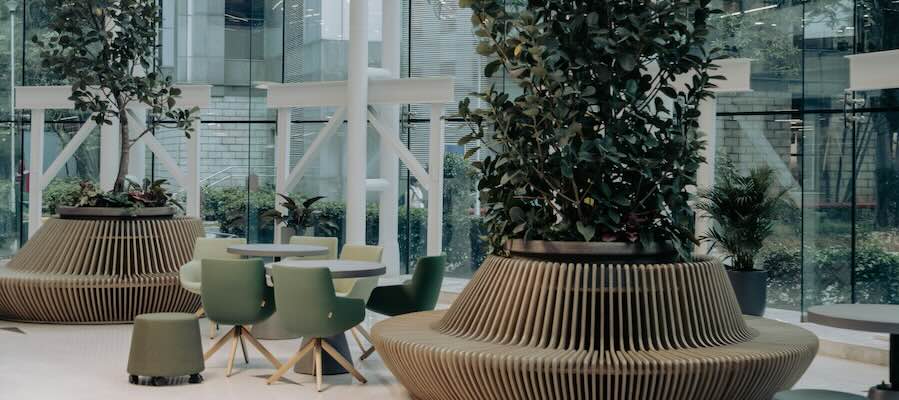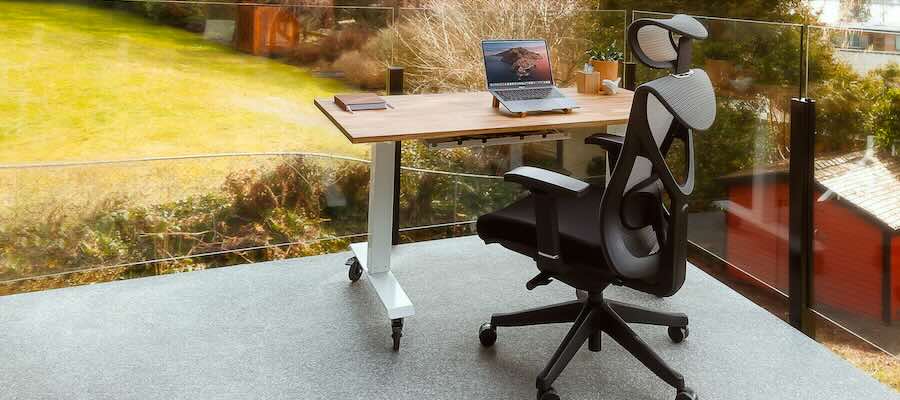AI & The Smart Office
The impact of Artificial Intelligence (AI) across almost all aspects of society is sometimes difficult to quantify, given the often overhyped coverage the topic receives. This is true of the use of AI and other smart technologies in the office as much as in any other sphere of life, but the one thing which is certain is that AI technology has now become firmly embedded in the UK.

Smart Office Technology
According to figures published by the City of London Corporation, private capital investment in the AI sector in 2022 hit £3 billion, as AI scale-ups in the country managed to secure double the funding of those across the rest of Europe combined. More recently, Forbes published a slew of statistics looking at the take-up of AI in the UK and trends in its use. Amongst the more notable facts and figures were the following:
- The US International Trade Administration stated that the UK AI market is currently worth more than £16.8 billion and is expected to reach £801.6 billion by 2035.
- The number of AI companies in the UK has increased by 600% over the last decade
- Government research shows that a total of 432,000 UK organisations – representing one in six – have utilised at least one AI technology
- Of these UK organisations, 68% are large companies, 33% medium-sized and 15% small
- One example of the positive impact of AI was provided by Marks and Spencer – following a 10 week trial of computer vision technology they reported an 80% reduction in warehouse accidents
In terms of the office space, the impact of AI and smart technology is likely to begin with a reliance on the Internet of Things (IOT), with devices and sensors throughout an office gathering data in real time and communicating not only with each other but also with centralised hubs, often based in the cloud. In this article we’ll look at some of the applications of smart technology within offices which are already being adopted, as well as highlighting some of the changes and advances which are likely to emerge in the short and longer term future.
Smart Office Sensors
Perhaps the most basic application of smart technology in an office involves the utilisation of sensors to collect data across the office and adjust the environment within the office accordingly. Factors which could be handled using sensors of this kind include the following:
Occupancy – sensors which pick up motion and heat – known as passive infrared sensors (PIR) could be used to monitor the occupancy levels of particular parts of an office in real time. This would help to manage the movement of people around the office, as well as making it easier to check, at any time, whether a specific desk, pod or room is occupied at any given time.
Over the longer term, the data on occupancy gathered by such sensors could be leveraged to plan more efficient use of the space in an office, by identifying ‘dead spaces’ which are rarely occupied, and any areas which are overcrowded. Simultaneously, real-time data on the occupancy levels of all parts of an office will make it easier to manage energy consumption efficiently. The lighting, heating and/or cooling in unoccupied parts of the office could be turned down or off, something which will help to reduce costs across the board, limit energy consumption and improve the comfort levels of the office as a whole.

Well-being and ESG
Although they all work in different ways, what sensors of this kind have in common is that they place a sharp focus on two things – the comfort and well-being of employees and the efficient use of resources such as energy. Providing the best environment possible for employees to work in will have the obvious benefit of boosting morale and, with it, productivity. Increasing efficiency will save money on the bottom line as energy costs drop, as well as helping to boost the sustainability of a business.
We're in an era in which ESG (Environmental, Social and Governance) plays an increasingly important role in the choices being made by employees and customers alike. According to the Global Workforce ESG Preferences Study 2024 published by PwC, 68.6% of prospective employees described ‘overall environmental policies and practices’ as being important when choosing an employer, while 75% felt that the ‘overall societal impact’ of the employer was important.
In terms of consumer behaviour, a study published by Deloitte, entitled The Sustainable Consumer 2023, found that one in ten consumers would make a purchase on the basis of the carbon footprint of a business, while 16% believe that data on the carbon footprint of a business is a key component of a sustainable approach to business. The kind of in-office sensors detailed above will not only make it easier for a business to reduce their carbon footprint, they will collect data which can feature in branding and information used to establish the ESG credentials of a business.
Individual Tech
As well as utilising sensor technology and AI to monitor and adjust the wider environment of an office, businesses could, in the future, combine the kind of smart building technology already discussed with tech-embedded furniture and wearable tech in order to maximise employee well-being.

Wearable devices like smart watches and fitness trackers could, with permission from employees and strict privacy rules in place, be connected to the software which controls the environment of the building as a whole in order to gather data on metrics such as physical activity. This data could be combined with real-time readings on air quality, acoustics and heating. The data in question could then be used to promote healthier lifestyles and optimal working conditions.
The main barriers to a wider take-up of individual tech of this kind are likely to be based on concerns about privacy and data security and therefore it is unlikely to be seen in our offices in the near future.
Smart Furniture
A perhaps less contentious and risky utilisation of this kind of individual tech would be to use smart desks and chairs. Equipment of this kind could be used to not only gather data on the office as a whole, but also to feed back to the individual employee on issues such as posture and ergonomics.
An advanced smart chair could be programmed to adjust automatically in response the individual using it, altering things like the height of the seat and the angle of the backrest in response to the weight and body shape of an individual employee. Tech of this kind would guarantee the best possible working environment for each individual employee whilst still maintaining the flexibility of a hybrid office space in which different employees use different workstations on particular days of the week.

Multiple Devices
Another development which was driven by the pandemic and has since become embedded by the shift to hybrid working is the widespread utilisation of Audio Visual (AV) technology in the office space. Remote and hybrid working means that the technology which facilitates virtual collaboration needs to be flexible and effective across the widest possible range of devices, locations and working methods. The software utilised by offices needs to be able to manage and monitor multiple devices of this kind simultaneously, and to streamline operations such as timetabling and booking multi-participant meetings. At the same time, the devices themselves need to be optimised in terms of user experience, practical effectiveness and sustainability.
These issues are characterised by the shift taking place in many offices, from traditional LED screens to Organic Light-Emitting Diode (OLED) screens. Devices which use screens of this kind are markedly thinner than those using LED technology and also – through the use of organic electroluminescent layers – produce image quality which is brighter, sharper and clearer. This makes it easier for employees to work for prolonged periods via screens and to collaborate with clearer channels of communication, with sharper pixels meaning clearer video calls and texting. At the same time, OLED devices consume less energy than the alternatives, making them more cost-effective and environmentally friendly.
By combining advanced individual devices of this kind with the power of cloud computing, employers are increasingly able to create virtual spaces for work to take place in which drive collaboration which is as effective as that which takes place when employees are gathered in the same physical space.
Hybrid Huddle
Perhaps the ultimate utilisation of the kind of advanced AV technology detailed above can be found in the hybrid huddle room, a collaborative workspace which features high-end AV technology such as screens and cameras as well as microphones to level the playing field between in-person and remote participants. The ideal end-point would see the removal of the distinction between in-person and remote participants which still exists in the minds of many employers, with team members who are, quite literally, scattered across the globe, able to collaborate as effectively as those present in the same huddle room.
Office Flexibility
The switch to a more tech-oriented office space will only be possible if the space within which they operate offers the highest levels of flexibility. At our own Davidson House office space, for example, tenants are given a blank canvas on which to build the hi-tech office space they need to compete in the 21st century. We see our role as facilitating the kind of forward thinking that will seek to adopt the kind of solutions mentioned in this article, applying those which represent the best fit for each individual business.
Our versatile floor plans and range of spaces mean that you’ll be able to find the office which exactly meets your requirements, and is ready and flexible enough to adapt to the demands of the future.